Since the 1940s, engineers have invented many ways to guide weapons to their targets. The technical details of all these methods would undoubtedly fill a book (or many books), but a basic understanding of them is helpful to make sense of the tangle that is the history of guided missiles. We can broadly break them down into two types: target-based and location-based. Target-based guidance systems try to steer to a specific thing, be that a ship, an airplane, or a building, while location-based systems are going to a specific place. Another important axis is how much help the guidance system needs from outside. Some weapons are fire-and-forget, just needing to be pointed and told to get on with it, while others require more or less involvement by someone outside to get where they need to go.

An Atlas ICBM
We'll get location-based systems out of the way first. Traditionally, these were the preserve of strategic weapons like ICBMs and long-range cruise missiles, fired at targets over the horizon. The simplest system of this type is inertial guidance, which sums up all of the acceleration the weapon has done from a known starting point to figure out where it is and what it needs to do to reach the target. The problem is that any errors in measuring acceleration build up, and need to be corrected if you want to hit a target with a conventional warhead. At first, the corrections were radioed by an outside observer, but later systems were developed to allow autonomous operation, at first by using star sightings and later by matching against the terrain below the missile or looking at surrounding landmarks. Today, location-based guidance is ubiquitous thanks to GPS, which allows weapons like JDAM to hit precise targets with little outside support.1 The only real drawback is that you need to know exactly where the target is. That's impossible if the target is moving, which covers a significant fraction of things we might want to blow up.2
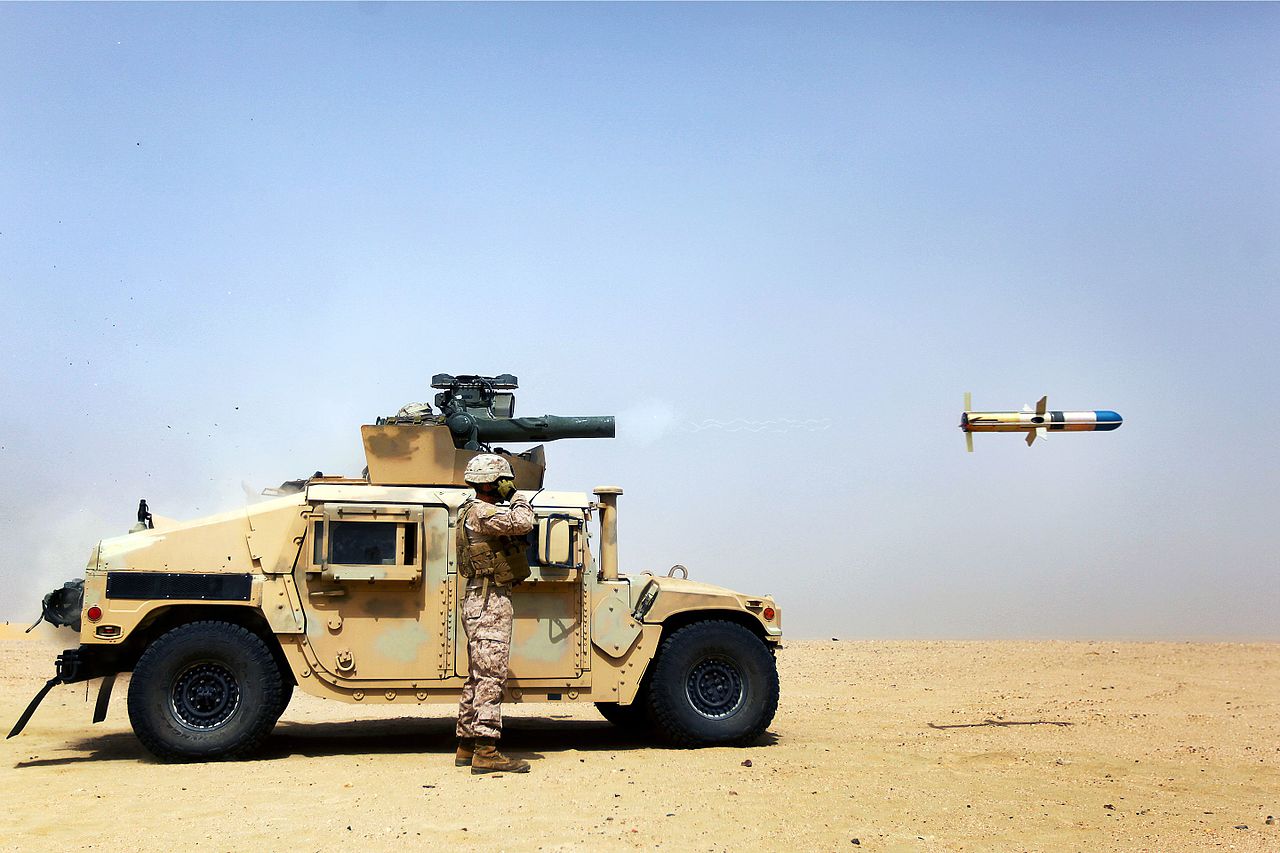
TOW, which uses SACLOS guidance
So that brings us to target-based systems, which can be broadly broken down into command systems, where the missile is told specifically where to go, and homing systems, where the missile is free to navigate on its own. The most basic form of this is that used by weapons like the German guided bombs of WWII, where the operator steers it to the target directly, by trying to keep it in the line of sight between him and the target. The obvious problem is that it requires the operator to track both the target and the weapon, and figure out what steering cues to send. Operator skill is at a premium, and the line-of-sight method only works well when the missile is much faster than the target. The first drawback can be mitigated by having the system automatically steer the missile into the line of sight, known as Semi-Automated Command Line of Sight (SACLOS) guidance. This is common for anti-tank missiles, which use wires or radio to pass guidance signals to the missile, but still requires the operator to keep the sight on target, which can be a problem when he's being shot at.
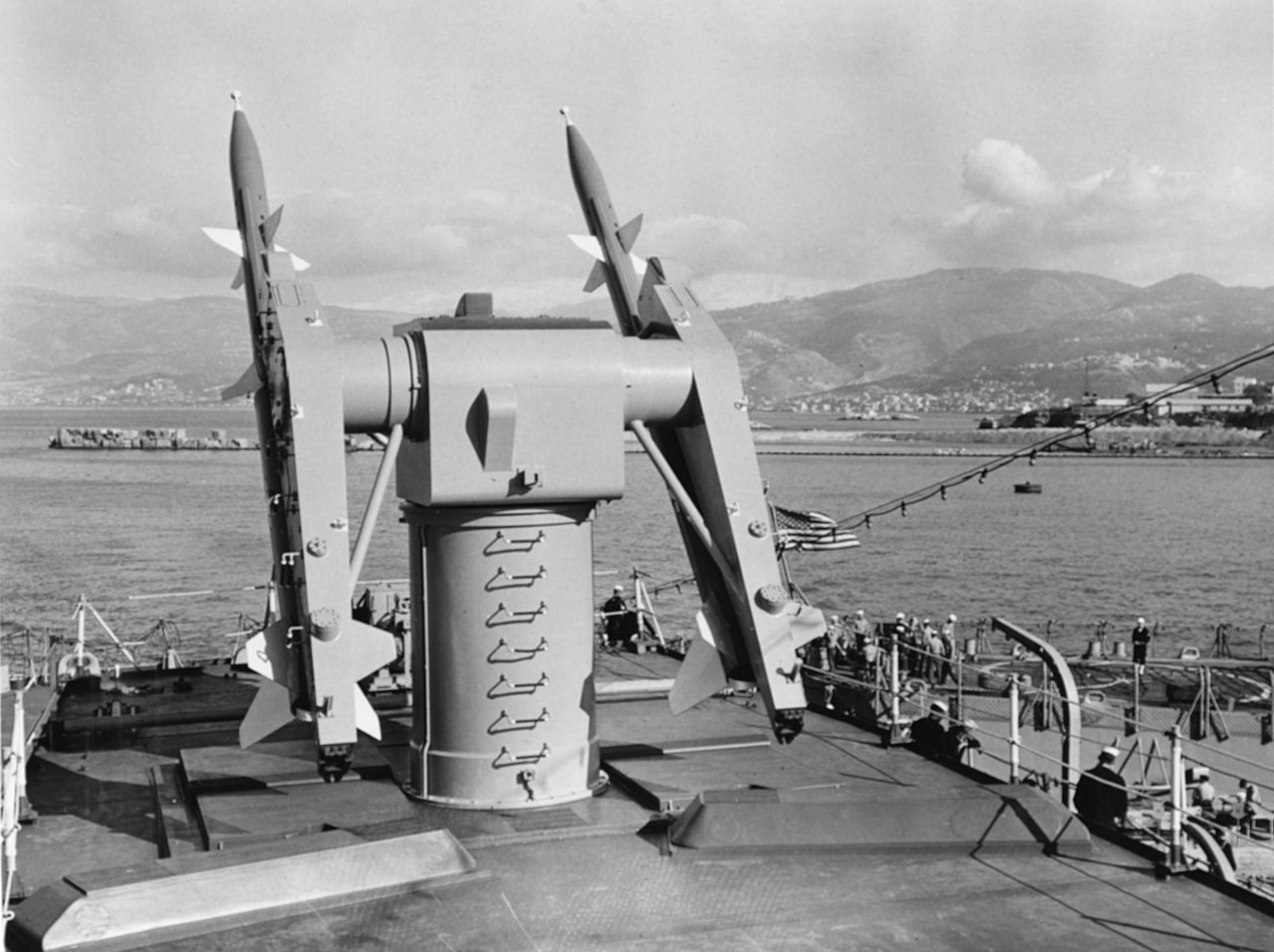
Beam-riding Terriers aboard USS Boston
Related to SACLOS is beam-riding guidance, which was used by many early SAMs. In this case, a beam is created using either radio or lasers, and the missile simply keeps itself in the beam. This is simple to implement, but means that the missile flies a fairly inefficient path to the target. It also means that the weapon becomes less and less accurate the further away it gets, and that each target needs a beam on it from launch until impact, although multiple missiles can usually ride the same beam. More broadly, there's what we might term pure command guidance, where an offboard computer directly compares where the missile is with where it needs to be and radios corrections without the use of a beam or line of sight.
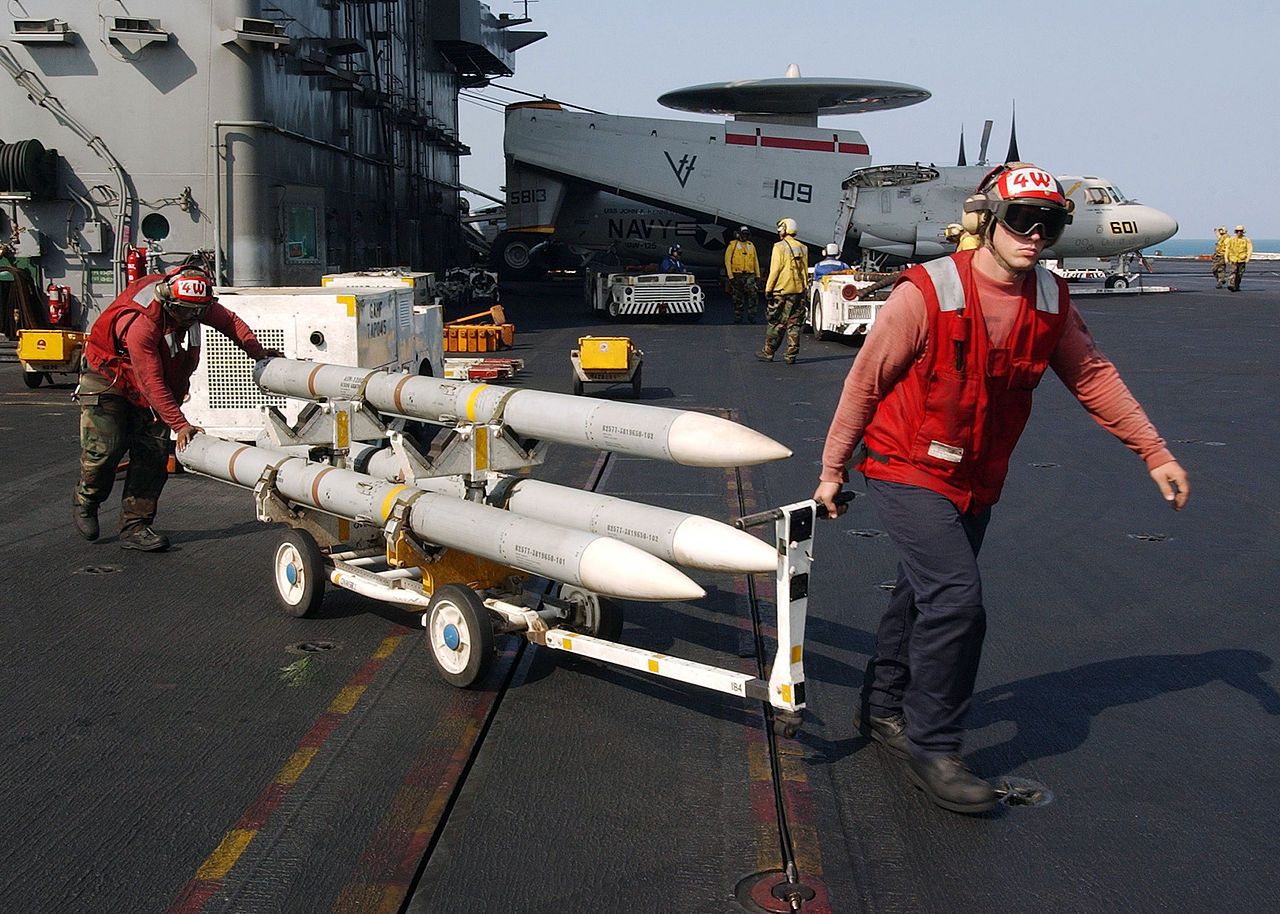
Active-homing AMRAAM missiles on a carrier deck
Solving these problems brings us naturally to homing guidance. These are systems where the missile is somehow able to detect the target and navigates there on its own. Target detection methods can be further broken down into three categories: active, semi-active and passive. All three share the advantage that because they are directly sensing the target, they get more accurate as they get close, not less. Active homing is when the weapon's seeker sends out a pulse of energy and then listens for some of it to bounce back from the target. Usually, this is a radar pulse, although torpedoes often use active sonar. The biggest advantage of active homing is that it can be fire-and-forget, requiring no aid from the launching platform, but missiles usually have a limited amount of power, and it can be tricky to make sure the seeker actually locks on to the right target.
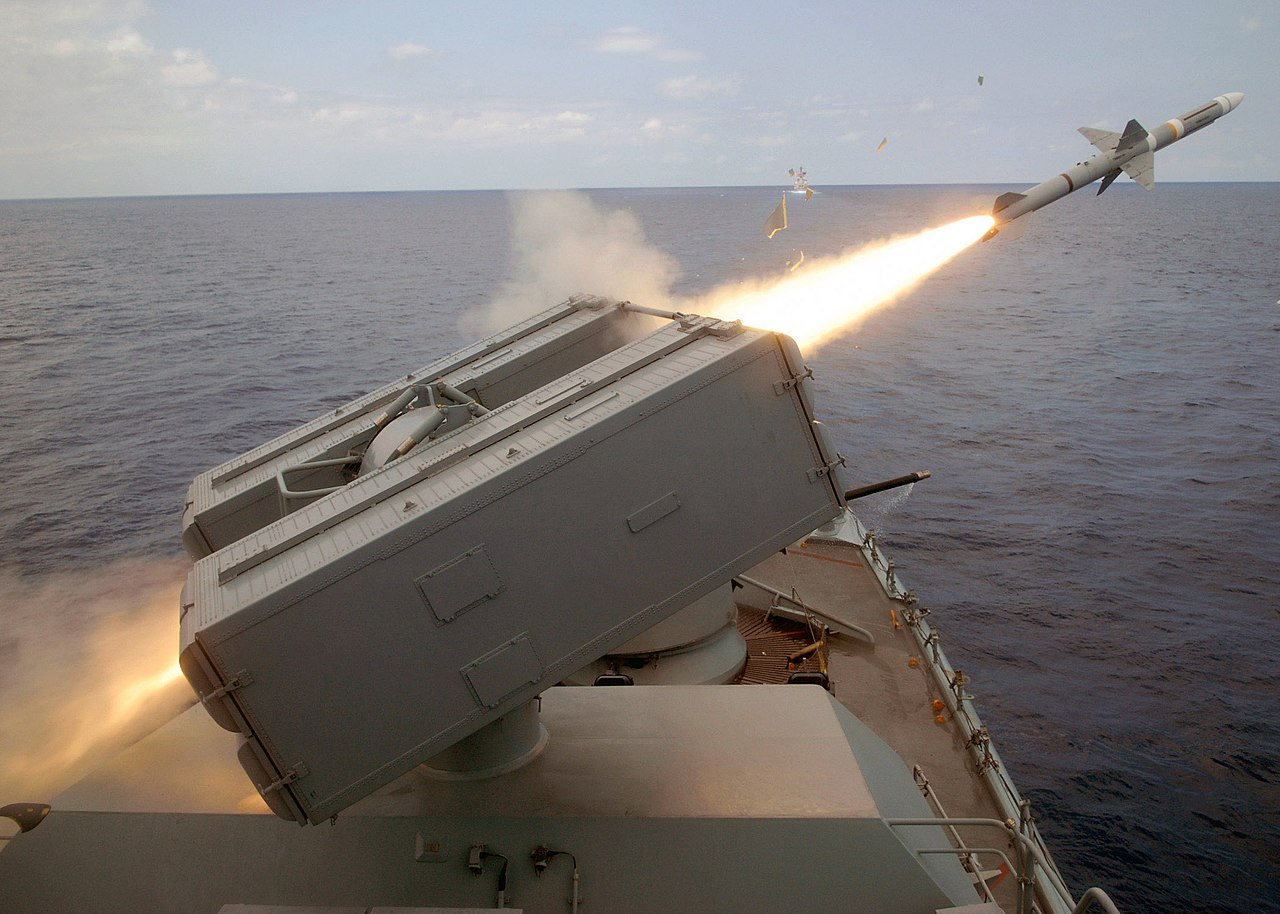
Semi-active Sea Sparrow is launched during an exercise
Semi-active homing also relies on energy bouncing off the target, but unlike active homing, the energy comes from outside of the missile. A large number of anti-aircraft missiles work this way, using radar energy, although the most common application these days is against ground target, using a laser to paint whatever you want to blow up. Semi-active homing has two main advantages. First, it's much simpler to implement than active homing, as a lot of the complexity can be offloaded to the designator system, which doesn't blow up at the end and has a much larger power budget. Second, the designator is able to paint the target, removing any issues with figuring out the right target to hit. The downside is that you need the designator to stay on the target throughout the missile's flight, and the number of targets you can hit is limited by how many designators you have. Some semi-active systems work around this by launching their missiles blind and only turning on the designator at the end of the flight.
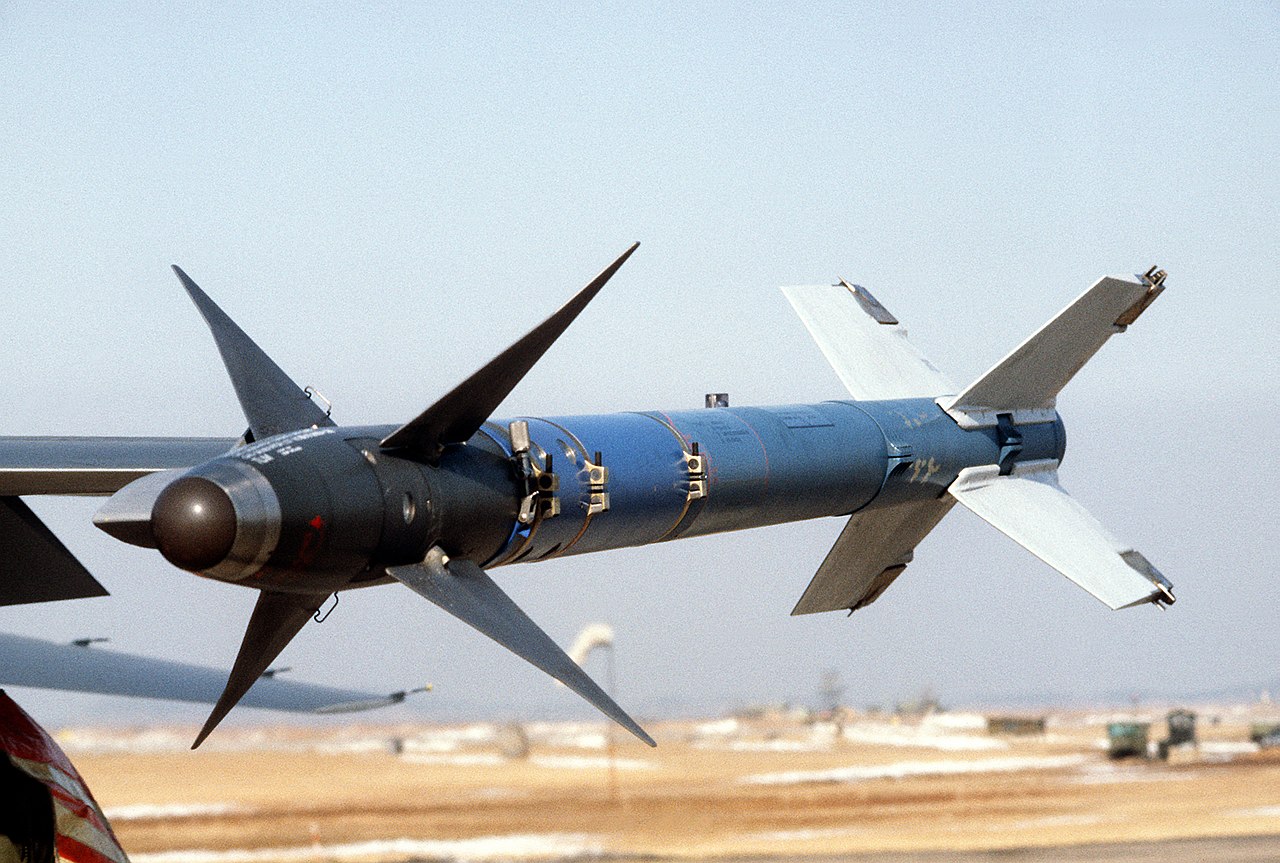
An AIM-9 Sidewinder, with passive IR homing
Lastly, we have passive homing. This looks for energy emitted by the target, without the need for any sort of illumination. This can be any number of things, ranging from infrared radiation from a jet's exhaust pipe to the radio signals sent by a SAM's targeting radar to a TV camera that can see the target and keep it centered. Passive systems tend to be very simple, which also allows them to be small and light, although range can be a problem. Modern technology has made these smarter, and given them the ability to find targets after launch.
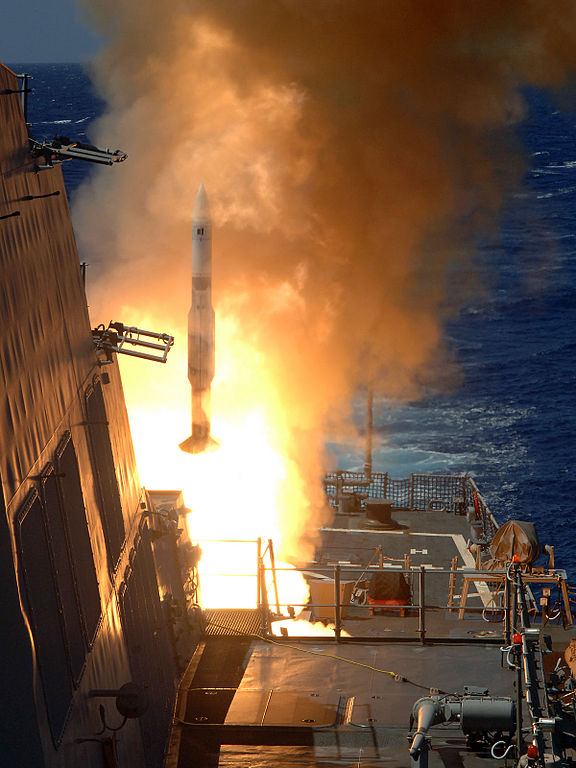
A Standard missile, which combines command guidance and semi-active homing
Modern weapons often use a combination of these systems to take advantage of their strengths while mitigating their drawbacks. For instance, the Standard surface-to-air missile uses command guidance throughout most of its flight, switching to semi-active radar homing shortly before impact. This allows it to fly a much more efficient path, as well as reducing the time an illuminator has to track the target, improving performance against saturation attacks. Similar systems are used by active-homing air-to-air missiles, as their seekers are not powerful enough to detect targets at long range. Today, the next big thing is not just using multiple guidance systems but giving the operator choices of guidance, each with its own strengths and weaknesses. Most weapons that are used for any sort of surface target have GPS, giving them a simple strike capability. More complicated systems are starting to enter service, most prominently Small Diameter Bomb II, which has a full set of location-based (GPS), command (data link), active (radar), semi-active (laser) and passive (IIR) guidance. Such systems will become more common in the next few years.
1 Yes, technically the GPS satellite constellation counts as outside support, but it's way outside the boundary of the weapon system itself. ⇑
2 Yes, in theory you could predict where the target will be when the weapon gets there, or even pass it updates on the target's location while in flight. In practice, this can work if the target is big and you can pass guidance updates quickly, but at that point, it's essentially command guidance using geographic coordinates. ⇑

Comments
...Or, if you really want to mess with the Ammo guys, the AIM-9C: a Sidewinder with an SARH seeker head.
I never want to mess with the ammo guys that much, which is why I'm pretty sure I used a picture of an AIM-9M or -9L instead of an AIM-9C.
...Back in the day, I used to win a LOT of bets that way by telling the newbies to look up the radar seeker for a 9C. They'd swear it couldn't be done, we'd make a quick wager, and the trap was set. The leadership eventually had to tell me to knock it off. ;)
These days, an increasingly-popular form of guidance has a camera on the missile and an operator with a data link that can watch the camera and fly the missile to its target. In a noncombatant-rich environment this has the advantage that the shooter can see what he is blowing up from up close instead of unleashing a killbot.
"only one missile per beam can be in the air at a time" Nope! Multiple missiles can ride the same beam just fine; there's more than enough radar lobe width for them. (This might not be the case for near-optical lasers, though.) AFAIK it was standard practice on earlier SAM systems, since in many cases and operating modes a single missile wasn't deemed accurate enough. (Op.mode example: the target aircraft jamming the radar's frequency denies range information to the radar, but direction is still available, thus a missile following the line-of-sight can still run into it. However, if the aircraft is moving -- even if flying in a straight line -- the missile has to pull a rather tight turn.)
Also, in WW2 the earlier German bomber guidance systems (Knickebein and X-gerät) were beam-riding systems. (Somewhat correspondingly, the night-fighter direction setup was a two-radar command system, with terminal guidance for the miss... fighter being either visual or onboard radar.)
That was an oversight on my part. I'm aware that standard practice on early naval SAMs was to fire missiles in pairs on the same beam, simply because Pk was too low otherwise even in the absence of jamming. I don't think bearing-only was particularly common, although some systems may have had backup optical trackers.